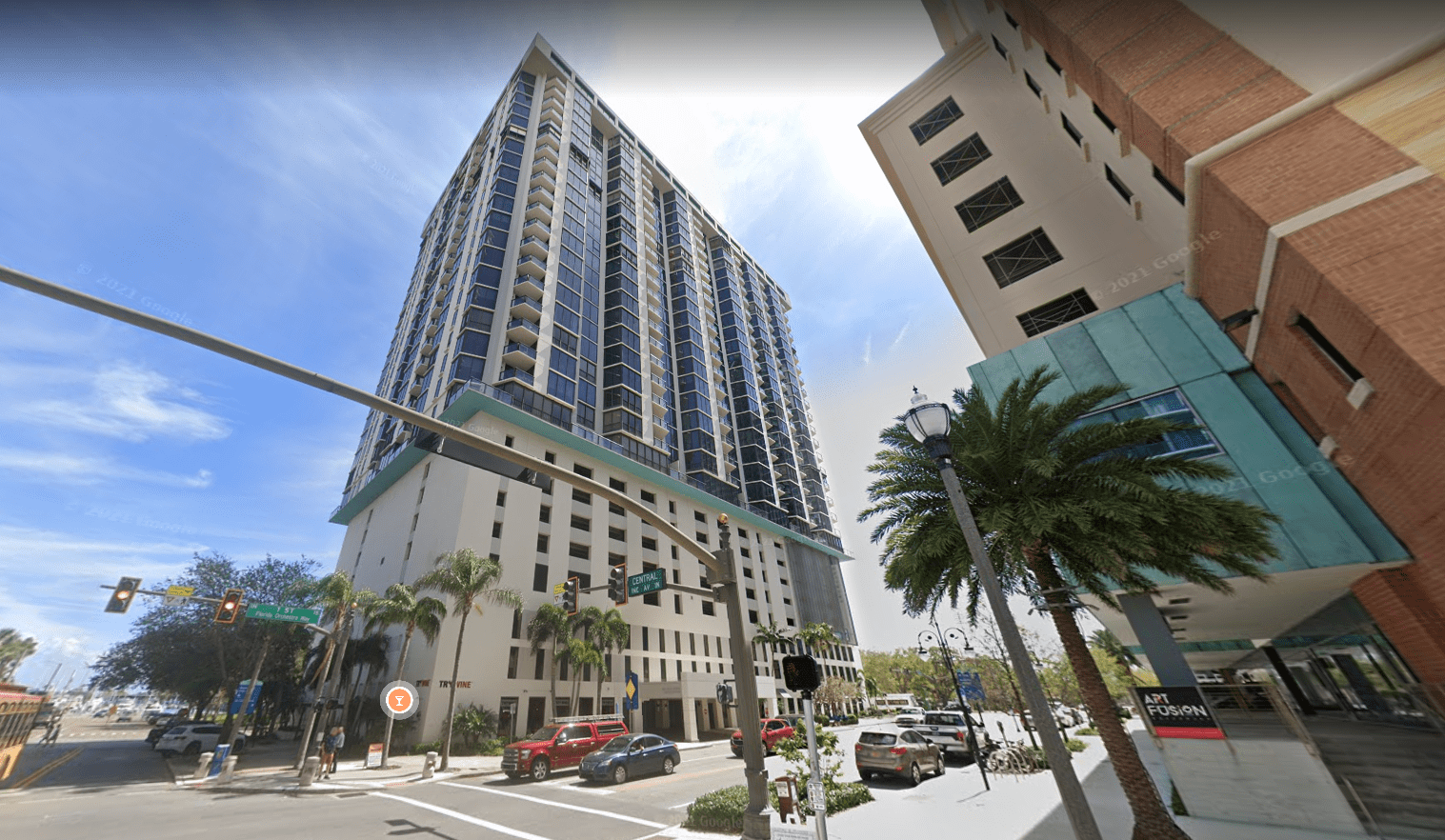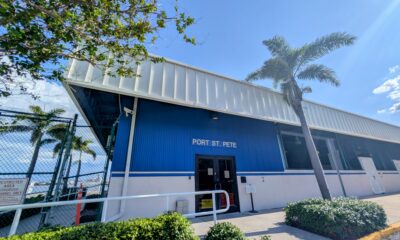Pinellas may enforce structural inspection on aging condos

The collapse of the Champlain Towers South building in Surfside, Florida in 2021, which left 98 dead, triggered several legislative actions to prevent similar catastrophic events from recurring – and Pinellas County officials want to adopt the latest set of those building requirements.
The initial bill, Senate Bill 4D, was adopted in the special session and was signed into law, regulating structural inspections of condominiums three stories or higher that are at least 30 years old.
“The statute in its first form raised lots of issues and concerns, starting with the issue of capacity,” Kevin McAndrew, director of building and development review services, said during a Thursday Pinellas County Commission meeting.
At the time of the new bill, there were 1.5 million condo units in Florida, and nearly two-thirds of those were over 30 years old and would qualify for inspections, but there was and still is a shortage of qualified engineers to fulfill the job. There were also issues regarding the inconsistent standardization, extent of the inspections, enforcement and deliverables.
The bill has since been restructured with better clarifications and was signed into law by Gov. Ron DeSantis in June. The bill, SB 154, has different components, including a structural study to evaluate condo roofs, fire protection and the life expectancy of buildings. It would also assign dollar values to the needed work.
“Staff is not recommending any deviation from the 30-year [building] statute age,” McAndrew said. Additionally, the condo inspections would commence every 10 years thereafter.
There would be a two-part inspection phase. Phase 1 entails a visual inspection performed by a qualified team to look at any substantial deterioration. If damage is discovered upon inspection, Phase 2 would be required to validate the remedial work needed and the condo association would have to form a plan. However, the scope of work can be on hold for a year.
“We have concerns about that duration. A year is a long time if there’s urgency,” McAndrew said.
The county could adopt a limited scope ordinance, which can be tweaked on an as-needed basis.
“This gives us flexibility in the future. If there are concerns, we can bring this back to you. The ordinance would give us a mechanism to reintroduce other provisions to tighten up areas if there was still concern,” McAndrew said. “We have talked with officials with the City of St. Petersburg. They are intending to move forward with an ordinance.”
He said City of Tampa officials also share the same intention.
Work completed to date:
- BDRS has been in a “monitoring mode” with the new bill and continues to communicate with the neighboring communities.
- On the technology side, BDRS has created a database. “We want to automate this to the greatest extent,” McAndrew said.
- BDRS sent out letters to condo associations within the database. The association members are aware of the active conversations about new regulations.
Next steps:
- BDRS will bring back an ordinance later this fall. “We have to work backwards from December 2024 date and don’t want to be pressed up against a 180-day period. We need to get this online as quick as possible,” McAndrew said.
Today in Unincorporated Pinellas County, there are 189 condos over 30 years old that would be subject to the Phase 1 inspection before December 2024. McAndrew said BDRS has interlocal agreements with six Pinellas communities, and there are hundreds of other condos units that could be eligible.
However, there is a lingering issue that commissioners pressed on – the financial burden placed on condo owners to foot the bill.
“Bayfront Towers just went through this process. There is about $45 million worth of repairs needed,” Commissioner Rene Flowers said. “If they [residents] don’t all chip in into the fund for the $45 million [worth of repairs], they will be evicted from the tower.”
The Bayfront Tower Board of Directors ordered an inspection after requests were made by condo owners, Flowers said.
According to documents obtained by the Tampa Bay Times, there were problems with post tension cables, the metal framing and stucco on the outside of the building, the garage concrete and the roof.
The Bayfront Tower Condominium Association Residential Inc. was not immediately available for comment.
The 250-unit, 29-story luxury tower was built in 1975. In 2014, the condo tower underwent a $10 million renovation.
Flowers encouraged the fellow commissioners to observe the condo association’s actions as it relates to billing residents.
County Administrator Barry Burton and McAndrew said the current statute does require condo association to notify prospective buyers and unit owners of the potential costs associated with funding infrastructure improvements.








Dave Foard
March 25, 2025at12:23 pm
Building safety is a genuine concern but the government should realize the impact on seniors with fixed incomes and provide some financial help like longer term loans of grants. I live in Clearwater and am caught in this situation. If anyone knows of any gov. programs that apply please post the information.
mike h
September 6, 2023at9:20 am
This is a way builders and developers can tear down old condos and redevelop with larger new luxury condos that only the super-rich can afford. New, so they won’t have to be inspected until 30 years old. It’s kind of a land grab, and the older seniors on fixed incomes are out of the loop. Sad.
Stephanie
September 2, 2023at9:43 am
It’s about time’. Let’s hope that the extra cost doesn’t get handed down to those seniors living on fixed incomes and low rent housing! If this happens more seniors will become homeless! So let the state pick up the fees for this inspection and keep seniors in their current housing; or the builders who built the bldg pay the cost of not being structurally sound. Now any that are no longer in business then state should pick up or % of cost to owner of bldge with caveat will not raise rents to cover owner responsibility cost!!’
Rob Anthony
September 2, 2023at8:39 am
Underfunded condo reserves are nothing new, see 2008 article below. You can’t have cheap HOA’s and expect to “kick the deferred maintenance can down the road” for the next owners to absorb forever. Eventually the bill will come due. Elevators, roofs, even buldings eventually wear out.
I lived in a waterfront condo community in Madeira Beach FL that put off fixing everything in exchange for cheap HOA’s. I saw the handwritng on the wall and got out 2 years ago.The condo owners will be facing several six figure assesments and the association may now be facing insolevency.
https://newenglandcondo.com/article/the-partys-over
George Case
September 1, 2023at11:12 pm
Well if the government would be responsible for their own inspections to begin with what happened in South Florida wouldn’t have happened. That was a lot of crooked shenanigans from the word go on the construction of that building without any doubt. If the state is going to have requirements for construction then they ought to be liable when they’re inspectors fail to catch it during the inspection process of the building of a building.
HAL FREEDMAN
August 31, 2023at10:26 pm
Rene Flowers is incorrect in her comment. Condo owners cannot be “evicted.” If unable to meet the potential special assessment, some owners may be forced to sell their condo or take an equity loan.
The way owners are “billed” can vary. Recently, one Beach Drive condominium building had a $75,000/unit special assessment (to repair the pool deck) that had to be paid in a single payment. When Bayfront Tower did their $10M Master Facility Plan, the Association borrowed the money, and each condo pays a relatively small monthly special assessment, in addition to their monthly fees. These are just 2 of the ways large special assessments can be handled.
Dylan Robbins
August 31, 2023at8:14 pm
I started my company 1-Day Inspections to help address this problem of the engineering labor shortage. We’re a drone company that inspects the entirety of a condominium with high resolution imagery and thermal imagery. We’ve allowed our engineering partners room to take on more projects since they no longer need to do intensive manual inspections. We also 3-D model the buildings so future buyers, sellers, and inspectors can reference the condition of the building during the time of our inspection. Basically, a historical record of the entire building.
The labor shortage is real. Let us know if you need help.
Ken 3
August 31, 2023at3:40 pm
Many of our condo residents are seniors who have lived in reasonably price condos for their retirement years. It looks like this legislation is likely going to be used to do more then worry about collapse. It will mostly kick out fixed income seniors from their decades long homes. While drastically decreasing those condo values. If only true structure issues that represent possible collapse are considered then this makes sense. But condo boards are likely to use this for gentrification of their buildings and forcing out lower income and fixed income seniors.